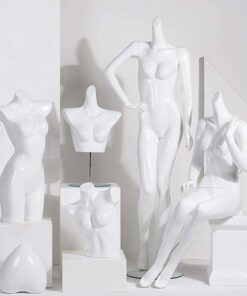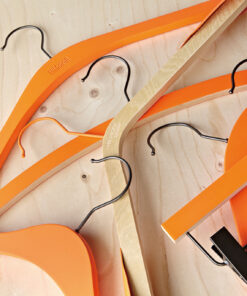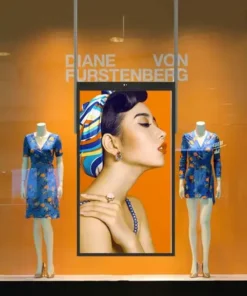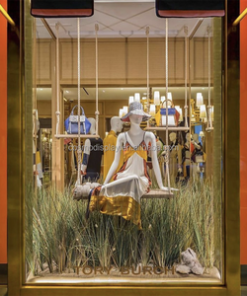RBN deals with the question to what extent manufacturers and distributors are meeting the increasing demand from customers for environmentally friendly display mannequins. You can read part I of our report this week.
Awareness of environmentally friendly materials, resource-efficient manufacturing and transparency in production methods and supply chains has increased significantly in many different sectors and industries in recent years. And so the mannequin industry is also increasingly facing the challenge of meeting customers’ desire for sustainable products.
What is the state of development within the mannequin industry?
What was considered a non-priority additional requirement within the industry a few years ago is now increasingly becoming a must-have for companies – “Mannequins must be recyclable,” says Tristan Arbter of IRW Germany. Their long-standing partner IDW has been producing mannequins made of polystyrene in Vilnius, Lithuania, since 1997 and, according to Tristan Arbter, was one of the first companies to work with up to 40% recycled raw material during production. “The manufacturing process using a blow moulding process is cleaner and faster than manufacturing with glass fibre. Our approach, which we consider to be industry-leading, has developed continuously over the last few years,” says the IRW division manager.
Bonaveri, the Italian family-owned company with a long tradition, is also well aware of the increasing importance of ecological issues and the responsibility they entail. “As a manufacturer, we must commit to producing a long-lasting product able to adapt to the changing needs of the fashion industry. It is customary for us to remain committed to quality and to enable the pursuit of sustainability, working to reduce our environmental impact.”
Nico Bonami, founder and owner of the Belgian manufacturer of the same name, is somewhat less optimistic about the basic situation within the industry: “Unfortunately, we don´t see much movement in our sector here, because price is still an important factor. Most traditional mannequins are made of fibreglass, PVC or PU, it is not such a healthy and clean production process”. For this reason, Bonami says they have done a lot of research and development in the past to work on a product that is good for the people and for the environment. “We are convinced that the combination of beautiful design with the perfect fit and 100% recyclable gives us a good combination to convince the market”, assures Nico Bonami.
Thomas Wimmer of Wissler Mannequins Vertriebs GmbH still classifies “green mannequins” as a niche product at present. “Environmental awareness and sustainability play a role in our industry, although the approaches to solutions are currently still limited. The vast majority of manufacturers still rely on fibreglass mannequins supplied from Asia,” says the Managing Director Sales Marketing, who adds “Although some environmentally friendly models were presented at the EuroShop in Düsseldorf, I still consider the actual market share to be small at present”. For Wissler, therefore, the following applies: “We too want to work with recyclable or recycled materials on the one hand and guarantee short delivery routes on the other. Only when we have a market-ready solution will we launch the first products”.
Using environmentally friendly materials alone is not enough
For Holger Kressin, owner of Ästhetik & Design The Mannequin House, sustainability also means more than just producing with “green” materials. “According to our understanding of sustainability, the working conditions of the people on site, the wages, the disposal of production residues, the transport of goods and much more must also be taken into account for this”. According to Holger Kressin, the further away all these factors are from where the finished products are used, the more problematic the issue of sustainability becomes. The figures, busts and accessory displays offered by his company are manufactured by partner companies on site in Italy and are therefore anything but cheap “fast fashion” items for short term use.







